Why Goblins?
- Matt Best
- Jul 20, 2022
- 6 min read
Updated: Aug 3, 2022
Let's get one thing straight - we LOVE D&D. It's a fantastic hobby that allows creativity, math, and socialization to intersect in truly unique ways.
However, this game has some problems, and one in particular stands out to us as something we can actually solve (or at least help to): level 1 encounters. More specifically, the enemies used for level 1 encounters.
The Problem
Why does every level 1 adventure wind up the same way...

Seriously, how many times have you gone to game night with your new character only to find them fighting off a band of goblins, a pack of kobolds, or a horde of skeletons / zombies? Maybe some bandits or twig blights get thrown in there for variety, but they are few and far between.
This is a problem for several reasons.
Firstly, it's boring. Maybe if you are totally brand new to the game you won't mind facing off against these classic enemies. But D&D vets are really going to start yawning when they have to fight off the same stat blocks for the umpteenth time, which can strain even the best anti-meta-gaming instincts to their breaking point.
Secondly, relying on goblins and kobolds (and eventually orcs or bigger goblinoids) more often than not trips into the problem of dealing with D&D's long and sordid history with its mistreatment of "monstrous races". Even without real-world analogs or racial coding, treating all goblins and kobolds as inherently lesser or evil goes against the more modern, ethical, and inclusive nature of D&D's community. Players don't want to paint with such a broad brush, and expect a level of nuance with the cultures of humanoid races.
That second problem leads to a third, whereby when you do treat "monstrous humanoids" with the nuance they deserve, it can un-game-ify these early level encounters. Not every encounter needs to be a combat, but D&D is inherently a game focused around tactical combat, and learning the basics of that combat system at level 1 is essential to creating a good experience later on.
Don't get us wrong - it's incredibly fun to parlay with goblins in order to foster lasting peace between them and the town. That's a great story! But if every low level adventure now has to accommodate the diplomatic option, that's putting a lot of work on GMs to update older adventures with that level of nuance, and it deprives combat-focused players and GMs of their primary source of fun.
Current Options
So does something already exist that we could replace all these goblins with? Keep in mind that we want this to be specifically catering to level 1 parties, so we are pretty limited on the challenge rating (CR). We also want something that can fulfill the same encounter design as goblins (combat with large groups of them), and something that is unambiguously evil; something the party won't mind killing without mercy.
Here's a breakdown of the available options by creature type, noting that we are specifically aiming to avoid the humanoid type since it requires that level of social nuance we spoke about before.
Aberrations
There are a few options here, but they all fall short of fulfilling the classic role of "evil goblins":
The flumph, which is an adorable, lawful-good creature.
Goon balloons (Spelljammer) are very goofy creatures that lack any sort of community, so they can't fulfill the same roll as goblins.
Neogi hatchlings (Volo's or Monsters of the Multivers) could work, except that fully grown neogi are CR 3, with even higher CR versions above them. That could escalate poorly for a low level group. They are also interstellar slavers, which could touch on session 0 topics.
Beasts
There are lots of solid options here, but only two aren't unaligned. Most empathetic groups would rather utilize magic or Animal Handling / roleplay to dissuade beasts from attacking them. They are also bound to specific environments and lack a strong sense of fantasy.
Constructs
Plenty of good low-CR options, but they are more well suited as one-off encounters. I.e. they need a reason to be there and they wouldn't be actively seeking out the PCs. They also lack a sense of community, so it's not like there would be a "raiding party" of flying daggers. The closest is the monodrone, but that's a pretty wacky creature to navigate, and they are also lawful-neutral.
Elementals
The only CR 1/8 option is the khargra (Mordenkainen's Fiendish Folio Volume 1). It degrades metal weapons and armor, making them a brutal death spiral in large numbers or over repeated encounters. Not a great fit for low level play.
Fey
Several creatures fit the correct CR limitations, but don't match on the other criteria.
Boggles (Volo's) deserve some level or moral nuance.
Brigganock (Wild Beyond the Witchlight) are terribly complicated, and are also typically neutral-good.
Valenar hawks are very Eberron specific and are best when paired with another creature, specifically something sentient humanoid-ish.
Fiends
Lemure are the only CR 1/8 or lower devil, and they are CR 0. Manes are the demonic equivalent, and while they are fine, they lack any sort of self-contained ecology. These options are overall limited in what they can mechanically accomplish and also warrant having more powerful devils or demons nearby to control them.
Monstrosities
There are a ton of CR 1/8 monstrosities, but these trend towards being either incredibly dangerous in large numbers (pack tactics of kruthiks from Mordenkainen's Tome) or have abilities that could easily get out of control for low level parties, like a gremishka (Van Richten's) turning into a CR 2 swarm.
Plants
These are typically unaligned or related to other, higher CR monsters. The best option by far is the twig blight, but they are so low on hit points and vulnerable to fire, making them trivial for your average party (fire damage is incredibly common with both leveled spells and cantrips).
Undead
Ah, the defacto "horde of evil things" creature type. The only CR 1/8 option is the Icewind kobold zombie, which is extremely niche. Skeletons and zombies are CR 1/4, but are just as over-used at low levels as kobolds and goblins.
Celestials, Dragons, Giants, & Oozes
These creature types have no CR 1/8 options.
A New Creature
Well, if WotC isn't going to give us a good low-level, horde-based enemy, let's make one ourselves!
First step, let's expand on those initial criteria to create proper goals for this creature.
It needs to be CR 1/8 and function well as a group / horde style monster.
It should have some reason for creating a "community" - a reason for it to act in tandem with several peers towards some goal.
Don't want a "hatchling" style monster, i.e. something that requires the presence of larger CR options to drive the story.
Want something that is strictly malicious, or which is morally simple enough that there won't be any "ick" or session 0 concerns for destroying them.
It needs to do something fun and mechanically interesting so that repeat encounters stay fresh and enjoyable.
By sticking to this list, we will theoretically create a viable replacement for goblins (and kobolds) that allows us to have our level 1 D&D combat encounters.
Taking all of this together, we arrived at something we hope you'll enjoy playing as much as we enjoyed designing: The Figment
Figment
The Figment is an ooze born from dreams and stray thoughts, capable of crossing over into the material plane to cause havoc as they seek out additional ideas that can give them greater power and form. These wayward thoughts are not strictly evil, and could even be helpful if born from a good memory or idea. But their alien mind and innate desire to collect more psionic energy make them natural antagonists in most cases.
Here are their statistics:


The figment accomplishes the goals we outlined above by combining reasonable statistics for a CR 1/8 threat with some interesting abilities. It wants to travel in groups, using the advantage of numbers not only in a classic "horde combat" kind of way, but also to make use of its powerful Gestalt ability whereby multiple figments can combine to grow in power.
It also lacks the social or cultural nuance of humanoid enemies, instead embracing the fantastical notion of an alien threat reaching out from a distant world with morals and schemes unlike our own. (It's also an ooze, which is a criminally underrepresented creature type in 5e).
Since a GM doesn't need to use the gestalt mechanics aggressively, it allows them to scale the figment's difficulty up or down as needed to suit the flow of combat. And even if the GM decides to create a larger figment, the majority of the gestalt abilities are defensive, allowing it to eschew damage in exchange for decreasing its gestalt score, and also applying a debuff to help mitigate powerful attackers.
You can download a full PDF of the figments stats and lore below:
Here are some extra token images to represent the myriad abstract forms these dreamy oozes can take, courtesy of Dream Art AI.
You can also pick up these same file from the Pay-What-You-Want listing on DM's Guild, adding them to your digital library collection.
Let us know what you think of the figment! We would love to hear how it does at your table.



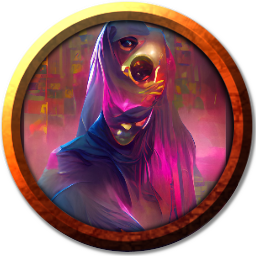

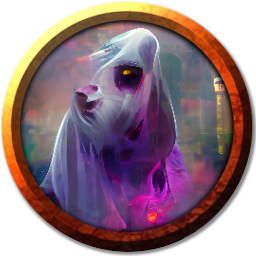



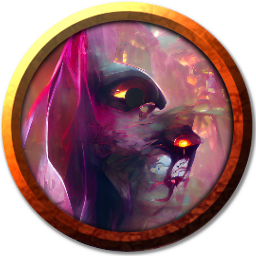

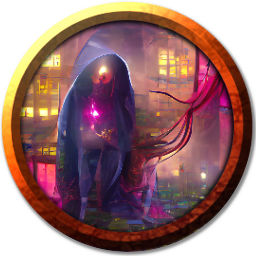

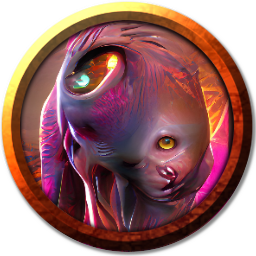
Comments